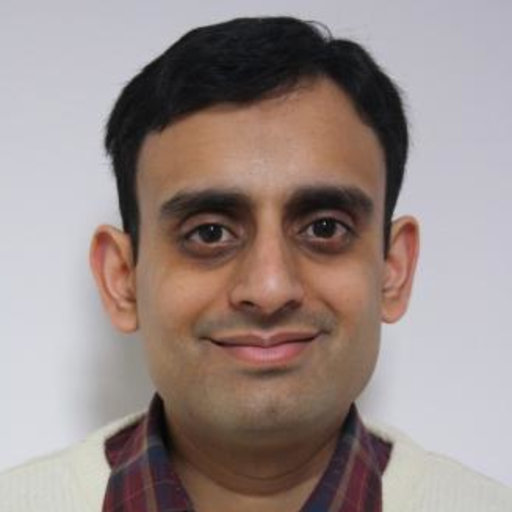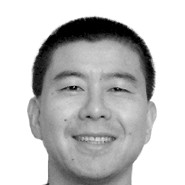
ACM SIGMETRICS 2018
Irvine, California, USA
June 18-22, 2018

ACM SIGMETRICS 2018
Irvine, California, USA
June 18-22, 2018


California Institute of Technology
University of Maryland College Park
The Role of Tensors in Deep Learning
SLIDES
Abstract
Tensors are higher order extensions of matrices that can
incorporate multiple modalities and encode higher order
relationships in data. Tensors play a significant role in
machine learning through (1) tensor contractions, (2) tensor
sketches, and (3) tensor decompositions. Tensor contractions
are extensions of matrix products to higher dimensions. Tensor
sketches efficiently compress tensors while preserving
information. Tensor decompositions compute low rank components
that constitute a tensor. We show that tensor contractions are
an effective replacement for fully connected layers in deep
learning architectures. They result in significant space
savings with negligible performance degradation. Tensor
contractions present rich opportunities for hardware
optimizations through extended BLAS kernels. I will end with
many open challenges in the area.
Biography (Anima Anandkumar)
Anima Anandkumar's research interests are in the areas of
large-scale machine learning, non-convex optimization and
high-dimensional statistics. In particular, she has been
spearheading the development and analysis of tensor algorithms
for machine learning. Tensors are multi-dimensional extensions
of matrices and can encode higher order relationships in
data. At Amazon Web Services, she is researching the practical
aspects of deploying machine learning at scale on the cloud
infrastructure.
Biography (Furong Huang)
Furong Huang's research focuses on machine learning,
high-dimensional statistics and distributed algorithms ---
both the theoretical analysis and practical implementation of
parallel spectral methods for latent variable graphical
models. Some applications of her research include developing
fast detection algorithms to discover hidden and overlapping
user communities in social networks, learning convolutional
sparse coding models for understanding semantic meanings of
sentences and object recognition in images, healthcare
analytics by learning a hierarchy on human diseases for
guiding doctors to identify potential diseases afflicting
patients, and more.


AT&T Labs Research
AT&T Labs Research
Techniques for Monitoring and Measuring
Virtualized Networks
Joint work with: Minlan Yu (Harvard University)
Abstract
Network virtualization promises to revolutionize how networks
are built and operated. While there has been a lot of focus on
the flexibility and cost reduction that software-based
virtualized networks promise, the move to software opens new
doors for network measurement and monitoring of networks and
network functions. In this tutorial, we discuss the
opportunities, challenges, and advances in monitoring and
measuring virtualized networks and network functions. We aim
to demonstrate that using these advances, one can not only
overcome the challenges that come with an unproven and
maturing technology, but also have monitoring and measurement
capabilities that have so far eluded large physical
appliance-based networks, in general.
Biography (Aman Shaikh)
Aman Shaikh is a principal inventive scientist at AT&T Labs
Research. He obtained his Ph.D. and M.S. in Computer
Engineering from the University of California, Santa Cruz in
2003 and 2000, respectively. He also holds a B.E. (HONS) in
Computer Science and an M.Sc. (HONS) in Mathematics from the
Birla Institute of Technology and Science, Pilani, India. His
current research interests include service quality management,
SDN, and NFV. Several tools that have emerged from his
research are being used extensively by AT&T operations teams.
Biography (Vijay Gopalakrishnan)
Vijay Gopalakrishnan is a Director in the Network and Service
Quality Management Center in AT&T Labs-Research. His
research interests fall broadly in the areas of networked
systems and protocols. He leads a team of researchers focused
on various systems aspects of networking including network
management, network function virtualization, software defined
networking, network protocols, and mechanisms for efficient
content delivery. Before joining AT&T in 2006, Vijay got his
MS and PhD in Computer Science from the University of
Maryland, College Park in 2003 and 2006 respectively. He is a
member of the ACM and the IEEE.


Eindhoven University of Technology
Eindhoven University of Technology
Structured Markov Chains
SLIDES
Abstract
Markov chains are popular stochastic models, because of their
intriguing mathematical properties and flexible structure, but
more importantly, they provide a powerful instrument for
modeling, analyzing and understanding a large variety of
systems and networks, including manufacturing systems,
communication networks, traffic networks and service systems.
This tutorial provides an introduction to Markov chain
modeling and analysis, with an emphasis on analytical methods
to determine the steady-state behavior of Markov chains. We
will classify Markov chains based on their structural
properties. As it appears, these structural properties
determine the analytical methods required for solving
them. Various analytical methods will be discussed, including
generating functions, spectral expansion, matrix-geometric and
matrix-analytic methods. Markov chain modeling and analysis
will be demonstrated through illustrative specific problems.
Biography (Ivo Adan)
Ivo Adan is a Full Professor in the sections Operations,
Planning, Accounting and Control (department of Industrial
Engineering & Innovation Sciences) and Dynamics and Control
(department of Mechanical Engineering) at Eindhoven University
of Technology (TU/e) and holds the Manufacturing Networks
chair. His expertise and tuition areas include probability
theory / statistics, operations research, manufacturing
networks, stochastic operations research and queueing
models. His current research interests are in the area of
modeling, design and control of manufacturing systems,
warehousing systems and transportation systems, and more
specifically, in the mathematical analysis of
multi-dimensional structured Markov processes and queueing
models, providing an indispensable tool in the above mentioned
area.
Biography (Johan van Leeuwaarden)
Johan van Leeuwaarden is professor of mathematics at Eindhoven
University of Technology, focussing on stochastic operations
research and applied probability. Markov processes are a
central theme in this research (exact solutions, scaling
limits and asymptotic behavior), with applications to random
graphs, interacting particles and queueing networks. Key
current interests include clustering in scale-free graphs,
load balancing in cloud systems with many servers and
ultra-dense wireless systems.

IBM Research
Performance Modeling and Analysis of
Deep Learning Systems
Abstract
The tutorial will introduce the basic concepts of convolution
neural networks, the training process, and various systems
that support the distributed training using multiple GPUs on
multiple hosts. It will cover the workload characterization
and modeling for identifying performance bottlenecks. The
performance models are also used for capacity planning,
performance optimization, as well as system design.
Biography
Dr. Li Zhang is the manager of the System Analysis and
Optimization group at IBM T.J. Watson Research Center. His
research interests include design and optimization of high
performance big data systems; performance analysis, control,
scheduling, and resource allocation in parallel and
distributed systems; traffic modeling and prediction for large
scale computer systems. He has also been working on
measurement based clock synchronization algorithms. He has
co-authored over 100 technical articles and over 50 patents.
A math major at Beijing University, he received his M.S. in
Mathematics from Purdue University and his Ph.D. in Operations
Research from Columbia University.